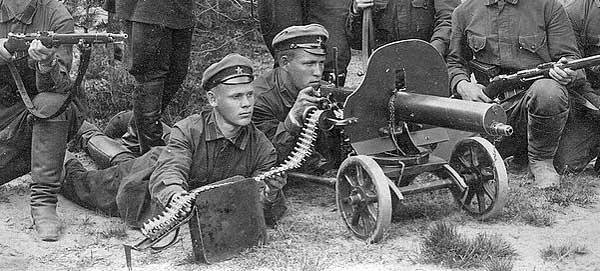The Central Powers had no ambitious plans for the Romanian front in the spring of 1917. However, the Romanian army’s offensive in the summer of 1917 forced the German and Austrian military decision-makers to develop a plan for a counterattack.
Some of the most important German and Austrian units on the Romanian front had been withdrawn in the first part of 1917 to be used on other fronts for major military operations. These included the Alpine Corps, the Wurttemberg Mountain Battalion, the Schmettow Cavalry Corps, and the XXXIX Corps. The Central Powers did not prepare any offensive plans for the Romanian Front due to the March Revolution in Petrograd, which was seen in Berlin and Vienna as a good opportunity to sign a separate peace with Russia.
Therefore, German and Austro-Hungarian troops on the Romanian front received clear orders to refrain from offensive actions against Russian troops. Moreover, they encouraged a “fraternization” with the Russian soldiers on the Moldavian front in order to exploit the Russians’ repulsion for the war. The information gathered from the Russian soldiers by Austrian officers revealed “the aggravation of the disorder, negligence and discipline of the Russian army on the Romanian front”.

But with regard to the state of the Romanian troops, the Austrian and German intelligence reports were contradictory. A report by the Austrians on June 25, 1917 concluded that “the morale of the Romanian soldiers had worsened. Their former warrior spirit had weakened even among officers”. The estimates made by the Austro-Hungarian and German secret services were also contradictory in terms of the reorganization and status of the Romanian army. Some reports showed that the Romanian army “was completely rebuilt”, and others that “it was completely disorganized”. The Austrian command concluded in June 1917 that “the Romanian army is barely ready to fight, with no great intentions for attack”. Only “local attacks by isolated divisions” were considered possible.
The signs of the coming Romanian offensive
In mid-July, the Romanian-Russian preparations for an attack were too obvious to be ignored by the Austrians and Germans. The Romanians and Russians were building bridges, additional roads, and a large number of Romanian soldiers appeared on the frontlines. The German and Austrian intelligence reports showed that Romanians and Russians would attack the Oituz, Mărăști and Focșani areas. On July 13, 1917, even German General Seeckt noted that “there are certain signs of an enemy attack against the right flank of the Austrian First Army”. The following day, General Friedrich von Gerok, whose battle group occupied that sector, warned his subordinates to expect an attack and to be ready for a counterattack.
Germany’s plan to respond in the case of a Russo-Romanian offensive envisioned a counter-offensive, on the model of the one used on the Galician front. German General Mackensen was appointed responsible for the mission to repel the offensive of the enemy and then for “attacking the Romanians and crossing the Lower Siret”. General Johannes von Eben, who had replaced Falkenhayn in May at command of the Ninth Army, quickly made plans for Operation Weisenernte. The Germans chose the point of attack to be Nămoloasa, like the Romanians, in order to pass over the Siret quickly.
The Central Powers lacked the numerical superiority they had in 1916. For the attack plan, only five divisions of the Morgen 1st Reserve Corps were available, equal in number with the initial Russo-Romanian attack force. The German reinforcements were on their way, but the Romanians and the Russians also had a large number of troops in reserve. Without the numerical superiority with which they were accustomed, the German plan was based on two hypotheses, that the Russians would not put up too much of a resistance and that the Romanians would not be able to withstand a sustained attack. None of these assumptions will prove to be correct.
On July 21, the Austrian front command had correctly identified the place where the Romanian-Russian troops will attack, namely, in the right wing of the Gerok battle group. The mistake of the Austrian command was that it considered the forces in that area strong enough to resist an attack. The respective sector, under the command of General Eugen Ruiz de Roxas, was defended by the Austrian 8th Mountain Brigade, the Austro-Hungarian 1st Cavalry Division, the German 218th Infantry Division plus a reserve division. The Russo-Romanian forces would attack with four divisions of the Romanian Second Army, commanded by General Alexandru Averescu, plus three divisions of the Russian 8th Corps. They had a numerical superiority of 2.7 to 1 in infantry and 1.6 to 1 in artillery. Moreover, at the central attack point at Mărăşeşti, the Romanian 3rd Infantry Division had a superiority of 4.3 to 1 in infantry and 1.4 to 1 in artillery.
Selective bibliography:
Glenn E. Torrey, România în Primul Război Mondial [Romania in the First World War], Meteor Publishing House, Bucharest, 2014.
I.G. Duca, Memorii [Memoirs], vol. I, Expres Publishing House, Bucharest, 1992.
Henri Prost, Destinul României: (1918-1954) [The destiny of Romania: (1918-1954)], Compania Publishing House, Bucharest, 2006.
The Count of Saint-Aulaire, Însemnările unui diplomat de altădată: În România: 1916-1920 [The testimonies of a former diplomat: In Romania: 1916-1920], Humanitas Publishing House, Bucharest, 2016.
Constantin Argetoianu, Memorii [Memoirs], Humanitas, Bucharest, 1992.
Florin Constantiniu, O istorie sinceră a poporului român [A sincere history of the Romanian people], Encyclopaedic Universe Publishing House, Bucharest, 2008.
Translated by Laurențiu Dumitru Dologa

